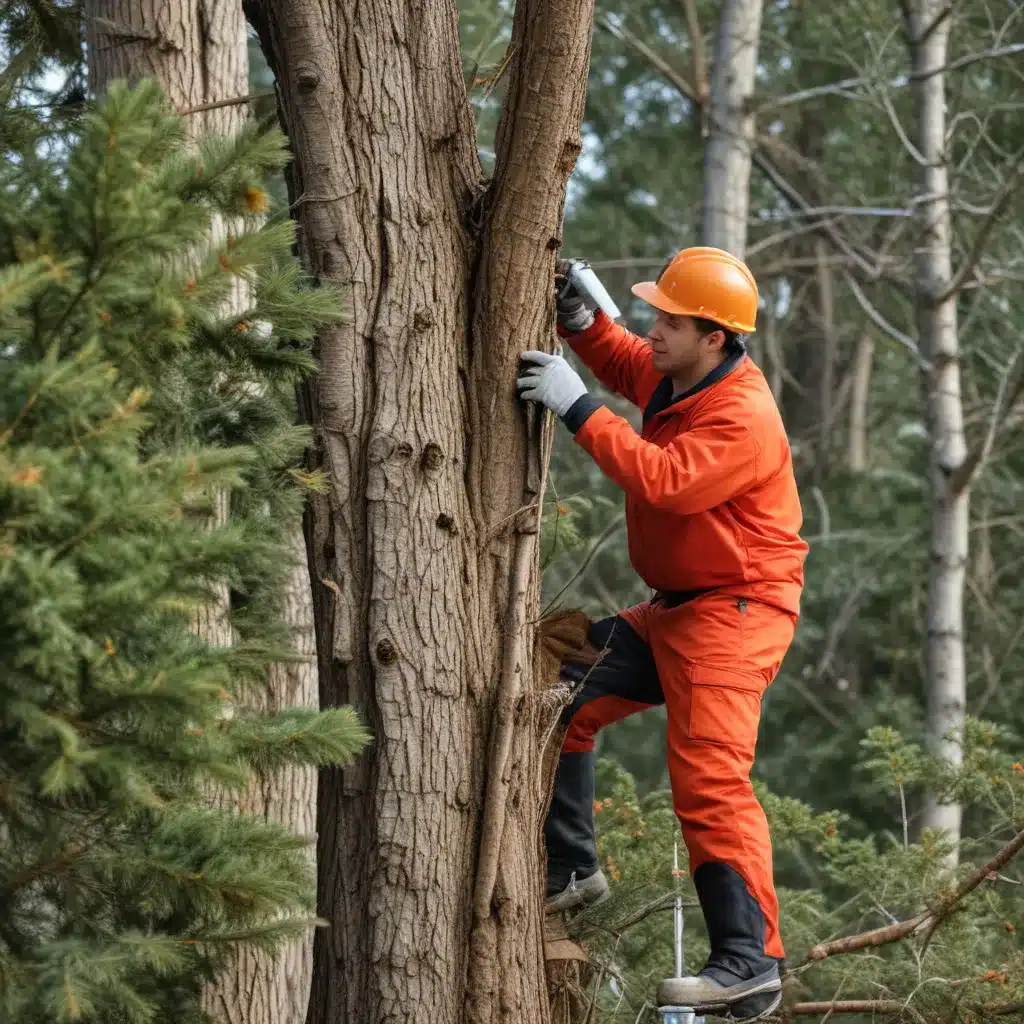
Maintaining the health and vitality of your trees is a year-round endeavor, requiring a deep understanding of their biological cycles and the dynamic environmental factors that impact them. As the seasons change, so too do the specific care needs of your arboreal sentinels. By crafting a comprehensive, adaptable tree care plan, you can ensure your trees thrive through the ebbs and flows of the calendar.
Pruning Techniques
Proper pruning is a cornerstone of seasonal tree care. During the dormant winter months, structural pruning can be performed with minimal stress to the tree. This is an ideal time to remove dead, damaged, or crossing branches, as well as to shape the overall architecture of the tree. Careful thinning allows sunlight and air to better penetrate the canopy, promoting overall health.
As spring arrives and new growth emerges, a lighter touch is required. Avoid heavy pruning during this period, as it can disrupt the tree’s energy reserves needed for budding and leaf expansion. Instead, focus on selective thinning to maintain an open, balanced structure. Remove any remaining dead wood and prune to encourage the desired form.
When summer heat and drought set in, trees require even greater care. Limit pruning to the removal of dead, damaged, or diseased branches only. Excessive cutting can further stress the tree during this critical growth period. Consider target pruning to address specific issues without overwhelming the system.
As fall approaches, prepare your trees for the dormant season ahead. Structural pruning can resume, allowing the tree to compartmentalize wounds and redirect energy toward root growth and winter hardiness. This is also an opportune time to address any codominant stems or other potential failure points.
Fertilization Guidelines
Maintaining optimal soil fertility is essential for tree health and vigor. In spring, apply a balanced, slow-release fertilizer to encourage robust leaf and shoot development. Avoid high-nitrogen formulas, which can promote excessive, soft growth vulnerable to pests and disease.
During the summer months, monitor your trees for signs of nutrient deficiencies, such as discolored or stunted foliage. Targeted micronutrient applications can help correct imbalances and sustain growth. Be mindful not to over-fertilize, which can lead to environmental issues.
As trees enter fall dormancy, focus on building root reserves. A late-season application of a phosphorus-rich fertilizer can enhance root development and winter hardiness. Avoid stimulating new growth too late in the season, which could make the tree susceptible to cold injury.
Pest and Disease Management
Vigilant monitoring for pests and diseases is crucial year-round. In spring, inspect for emerging insect infestations and fungal issues that can compromise tree health. Proactive treatment, whether organic or synthetic, can prevent small problems from becoming major threats.
During the summer, heat and drought stress can make trees more vulnerable to opportunistic pests and pathogens. Regularly check for signs of borers, defoliating insects, and foliar diseases. Implement integrated pest management (IPM) strategies to minimize disruption to beneficial organisms.
As fall approaches, prepare your trees for the dormant season. Inspect for any structural weaknesses or dead wood that could harbor overwintering pests. Consider applying dormant oil or horticultural spray treatments to reduce the population of harmful insects.
Climate Considerations
The impact of changing climate patterns on tree health cannot be overstated. As winters become milder and summers more extreme, trees face new challenges in their environments.
In regions experiencing warmer winters, monitor for signs of frost cracks or sunscald on young or thin-barked trees. Preventative measures, such as trunk wraps, can shield vulnerable bark from temperature fluctuations.
Conversely, in areas with harsher winter conditions, the weight of heavy snow and ice can pose a serious threat to tree branches and structure. Gently brush off accumulations after storms to alleviate stress on the tree.
During summer heat waves and droughts, ensure your trees receive adequate hydration. Deep, infrequent watering encourages robust root growth and drought tolerance. Supplement with mulch to conserve soil moisture.
Soil Health
The health of your trees is inextricably linked to the quality of the soil in which they grow. Regular soil testing can help identify any nutrient imbalances or pH issues that may be impacting tree vitality.
In spring, consider aeration around the root zone to improve oxygen and water infiltration. This can be especially beneficial for compacted urban soils. Topping up organic matter, such as compost or aged bark, can also enhance soil structure and fertility.
During the summer, monitor soil moisture levels and adjust watering schedules accordingly. Maintaining adequate soil moisture is crucial for supporting active root growth and nutrient uptake.
As fall approaches, focus on building soil organic matter through the application of compost or leaf litter. This will not only enrich the soil but also provide insulation for tree roots during the winter months.
Proactive Planning
Crafting a comprehensive, seasonal tree care calendar is essential for ensuring the long-term health and resilience of your trees. This personalized plan should outline the specific tasks to be performed throughout the year, tailored to the needs of your particular tree species and local climate.
In late winter, schedule structural pruning and dormant oil applications. As spring arrives, shift your focus to thinning pruning, fertilization, and pest monitoring. Summer care should emphasize water management, targeted pruning, and disease prevention. Finally, fall preparations should include root zone care, late-season fertilization, and cleanup of fallen leaves and debris.
Staying ahead of seasonal tree care needs requires the right equipment and supplies. Ensure your pruning tools are well-maintained and sharpened. Have access to a reliable irrigation system and fertilizer stockpile. Anticipate the potential need for tree wrap, insecticides, or fungicides, and budget accordingly.
By embracing the challenges of seasonal tree care, you can ensure the long-term health and vibrancy of your arboreal assets. For expert guidance and professional services, consult the team at TriCounty Tree Care – your trusted partners in preserving the natural beauty and ecological benefits of your landscape.


